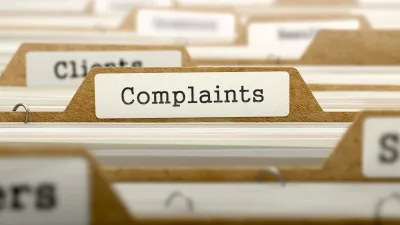Year end tax strategies - Getting down to business


|
|
It’s the time of year when many financial planners start to advise their clients on ways to minimise their tax liabilities, but it’s also a good time to start thinking about their own business and personal end-of-year needs.
In particular, those who own their own business should consider their options and opportunities, especially if they intend to sell the business in the near future.
Many tax-planning activities don’t require complex strategies and there are a number of straight-forward steps that will help minimise tax. However, these steps need to be taken before the end of this financial year if they are to be taken into account by the Australian Taxation Office (ATO).
Business tax considerations
Tax break
Part of the Federal Government’s $42 billion stimulus package is a tax break on the purchase of depreciable assets by businesses. It is a one-off deduction for eligible assets purchased between December 13, 2008, and December 31, 2009, and installed for use before the end of December 2010. This could include computers and laptops, mobile phones, motor vehicles used for business purposes, and any asset owned and not leased that would normally qualify for depreciation.
Eligible assets acquired before the end of June 30, 2009, and installed ready for use before the end of June 2010 attract a 30 per cent deduction (exclusive of goods and services tax (GST)). Otherwise, the deduction will be 10 per cent of the cost of any asset purchased between July 1, 2009, and December 31, 2009, but installed ready for use before the end of December 2010.
Small business entities only need to spend a minimum of $1,000 per asset in order to qualify. All other businesses will need to meet a minimum expenditure threshold of $10,000 per asset.
Therefore, if it is likely that the business will need to purchase some assets in the near future, it is worthwhile bringing the purchase forward to this tax year to take advantage of this break.
Small business entity
Small businesses — those with an aggregate turnover of $2 million or less — can take advantage of a number of tax concessions.
There are three ways to satisfy the $2 million aggregated turnover test:
- aggregated turnover for the previous income year was less than $2 million;
- aggregated turnover in the current income year is likely to be less than $2 million (however, this test cannot be used if business income in the last two years was greater than $2 million); and
- aggregated turnover for the current income year was less than $2 million, calculated at the end of the income year.
Any business that meets one of these criteria can access a number of benefits, including:
- asset depreciation: in addition to the one-off deduction outlined above, assets over $1,000 depreciate at 15 per cent for the year in which it was purchased and then 30 per cent for each year afterwards (for assets with an effective life of less than 25 years). Assets valued at less than $1,000 attract a 100 per cent tax deduction;
- prepayments: eligible businesses can claim an immediate deduction for prepayments, subject to the service period of the loan not being greater than 12 months;
- GST: this can be accounted for on a cash basis; and
- capital gains tax (CGT): may qualify for the small business CGT concessions even if assets are greater than $6 million (see below).
Small businesses should also review their pay-as-you-go (PAYG) instalments and notify the ATO if the expected profit for this financial year is lower than previous years so instalments can be adjusted down.
Small business CGT concessions
Business owners who are considering selling their business may be able to take advantage of the small business CGT concessions, which can provide substantial tax savings.
To be eligible, businesses must either qualify as a small business entity as outlined above or meet the net asset test threshold of $6 million. In many instances, assets held by a spouse are not included in the threshold, making it easier for businesses to satisfy this requirement.
It is usually more tax effective to sell shares in the business rather than its assets. Take the example of a business worth $20 million (based on the value of its assets) with three shareholders, each holding a third ownership. Using this valuation, the business would not be eligible for the CGT concessions. However, if shares are sold rather than the assets, each shareholder may meet the $6 million limit (depending on their individual assets and liabilities) and may therefore qualify for the concessions.
Business loans
If money has been borrowed from the business by its owners, a minimum repayment must be made by June 30. The amount of the loan will be assessable in full, and tax payable by shareholders, if the loan does not meet the ATO’s guidelines.
Business losses
Business owners may find it worthwhile reviewing the non-commercial loss rules, as they may be able to claim business losses against other income. The loss can only be offset against other income if at least one of the following tests is satisfied each year:
- the assessable income from the business for that year is at least $20,000;
- the total real property (or interests in real property) used on a continuing basis in carrying on the business activity is at least $500,000;
- the total value of other assets used on a continuing basis by the business is at least $100,000; or
- the business has generated taxable income in at least three of the last five income years.
If the business has a debt that is deemed ‘unrecoverable’ (as long as it is not a trade debt — see below), a capital loss can be claimed by formally releasing the debtor from their obligation. This may trigger implications for the debtor under the commercial debt forgiveness rules, which should be taken into account first.
With trade debts, a deduction can be claimed provided the amount has already been recorded as taxable income and it can be shown that reasonable steps have been taken to recover the debt. The debt must be written off in the books prior to June 30, but this doesn’t mean that steps to retrieve the debt should cease, and if it is later paid off, it is simply recorded as assessable income at that time.
Other considerations
- Dividend payments — consider the timing of year-end dividend payments, particularly in light of the simplified dividend imputation rules.
- Trust election — if the business is a trust, consider whether a family trust election should be made. Ensure that the trust loss provisions are considered if the trust has made losses.
- Superannuation — ensure superannuation contributions are made no later than June 30 so that the deduction is in this financial year.
- Log books — check that motor vehicle log books satisfy the substantiation requirements.
Personal tax considerations
Tax bonus
As well as the business tax break mentioned above, the Federal Government’s stimulus package included a tax bonus for working Australians earning less than $100,000 a year. Taxpayers must lodge their 2008 income tax returns by June 30 to be eligible. The bonus is based on taxable income recorded in the 2008 tax return:
- income less than $80,000 — $950 bonus;
- income between $80,000 and $90,000 — $650 bonus; and
- income between $90,000 and $100,000 — $300 bonus.
Single Income Family Bonus
Another component of the package is a $950 bonus for eligible families. The bonus is a one-off payment regardless of the number of children in the family and the primary income earner must earn less than $150,000 a year.
Families may also qualify for the Back to School bonus of $950 for each child aged between four and 18, or the Training and Learning bonus paid to recipients of student-related allowances such as Youth Allowance, Austudy or Abstudy. However, families cannot receive both the Single Income Family bonus and the Back to School bonus.
Tax rates
The personal income situation should be reviewed to see if income should be postponed to the 2010 tax year in order to access a lower tax bracket.
For example, those who have received a termination payment or redundancy package may find it worthwhile to postpone this until after June 30, particularly if they expect their income in the next financial year to be lower.
Also, if any bonuses paid this year are lower than previous years, consider whether it is most advantageous to receive it in this tax year or the next.
Capital gains and losses
Capital gains are assessable in the tax year that the contract of sale is signed. Consider whether it is best to defer signing or selling assets until after June 30. If capital losses have been realised during the year — which is likely to be the case for many investors — this can help offset capital gains.
Another consideration is that assets held for at least 12 months qualify for a 50 per cent discount on capital gains, so it may be worthwhile to defer selling assets where possible.
To help minimise tax, consider who holds the investments. If a spouse is on a lower income tax rate, it may make sense for them to hold any income-earning or capital growth assets.
Investment losses
There are two main types of investor loss — capital loss and revenue loss. An investor who has made a long-term investment in an equity but then sells out at a loss incurs a capital loss, and this can only be balanced against any capital gains in order to reduce CGT.
However, if that investor is classified as a trader, someone whose intention is to buy and hold stock short term and realise a profit, for example, the loss could instead impact taxable income.
Someone who regularly buys and sells shares with the intention of making a profit can argue they are a share trader. This is likely to be accepted if shares are turned over within a reasonably short time and there is a reasonable volume of trades within a year.
Many investors who have tried to benefit from the extreme volatility this year by frequently changing their holdings could put forward an argument that they have been trading.
It is possible for an investor to hold some shares as a long-term investor, and other shares as a trader, but in this situation records must make the distinction clear.
The records should demonstrate that the different treatment accurately reflects the investor’s actions in relation to the various share parcels. Investors should be aware that the ATO is likely to query a split that appears arbitrary or merely designed to give the best tax result.
Superannuation
Although super balances have been hit hard by the financial crisis, superannuation remains the most tax-effective way to build wealth for retirement.
Some considerations include:
- salary-sacrificing bonuses or other lump sum payments means tax is paid at 15 per cent rather than the marginal income tax rate;
- if selling assets before June 30, consider reinvesting the proceeds as a personal after-tax super contribution so the earnings are taxed at 15 per cent not personal tax rates;
- those who earn less than 10 per cent of their income from eligible employment can reduce income or capital gains tax by making personal super contributions;
- for those aged over 55, a transition to retirement allocated pension means earnings and capital gains are tax-free within the superannuation fund, although tax of 15 per cent is still payable on deductible contributions.
Investing via a trust
Those with a trust, either for investment purposes or to run a business, can use this structure to income-split and generate tax benefits. Simply ensure the person with the lowest tax rate holds income-producing investments.
General tax considerations
Other areas to review include:
- income protection insurance is 100 per cent tax deductible;
- work-related expenses, such as training courses or uniforms, can be deducted for tax purposes;
- a tax deduction is available if interest is prepaid for less than 12 months;
- interest earned on term deposits that mature before June 30 must be included in income for this tax year;
- for those without private health insurance who are earning more than $50,000 (or with a combined family income of $100,000), the 1 per cent extra Medicare surcharge is payable; and
- there are still approved managed investment schemes that enable investors to reduce their taxable income. Ensure the scheme has a current product ruling by the ATO and that the investments are in accordance with this ruling.
Mariana von-Lucken is a tax partner with accountants and business and financial advisers HLB Mann Judd Sydney.
Recommended for you
AFCA has confirmed United Global Capital’s membership of the body will not be extended to accept further complaints, avoiding a repeat of the Dixon Advisory scenario.
Three of Australia’s largest financial advice groups have shared their thoughts with Money Management on whether they would include crypto on their approved product lists.
Shadow treasurer Angus Taylor has vowed to introduce a bill to legislate a raft of financial services reforms if the Coalition is elected.
Money Management examines the share price of financial advice licensees over one year to 31 March, with M&A actions in the final quarter having a positive effect for two licensees.














